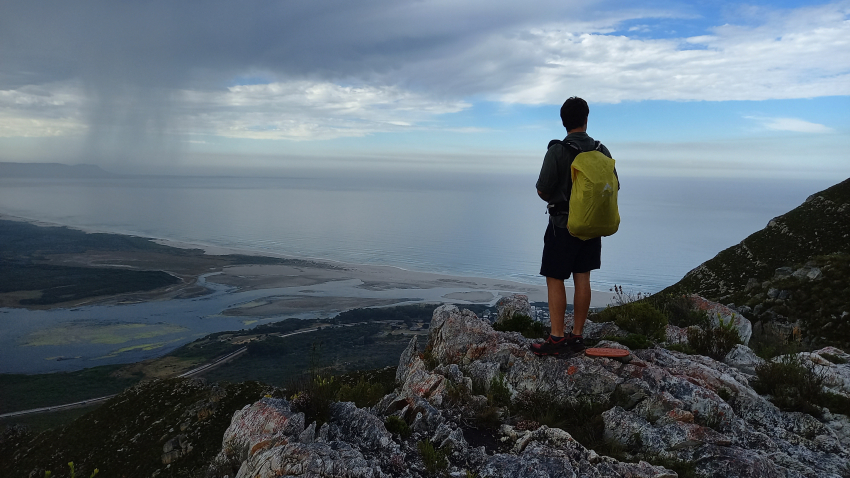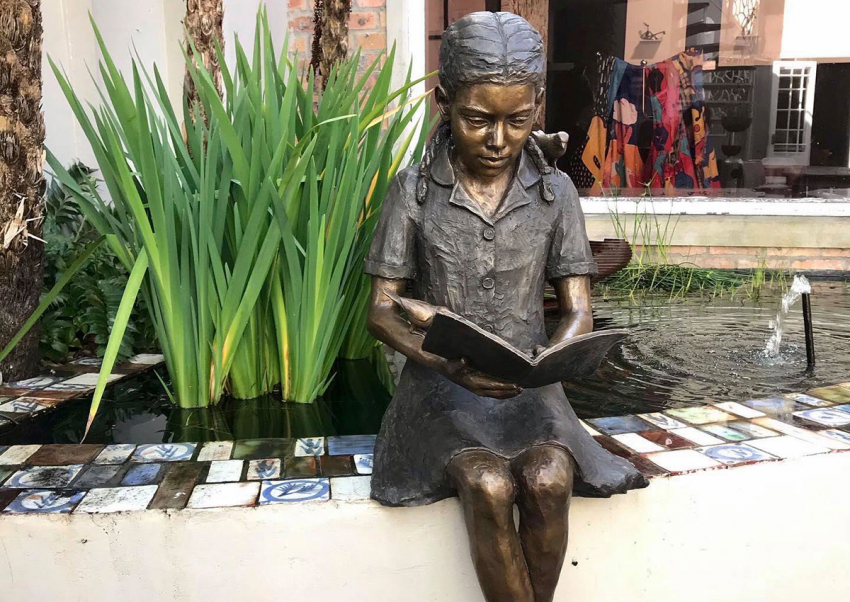The history of Hermanus includes at least thirteen hotels of which most no longer exist. In this story we’ll look at some of them.
In 1902 Beyers and McFarlane, who were brothers-in-law, bought land from Willem HT Hoffman and built the Marine Hotel. It was much grander an affair than their first hotel, the Victoria, although they still had no electricity or running water in the rooms. Many visitors came from Cape Town, overcoming the hardship of a three day ox-wagon ride. In 1915 the partnership between these two men ended and Valentine Beyers kept the Marine while McFarlane took the Victoria. Soon after this new arrangement Pieter John Luyt, son-in-law of Valentine Beyers, came to manage the hotel and when Beyers died, John became owner of the hotel, which he extended, enlarging the kitchen and added more rooms and bathrooms.
During the 1920s the Marine with its ballroom became extremely popular and many wealthy and famous people stayed there for holidays. Among them was Sir William Hoy who stayed at the Hotel annually for many years. Princess Alice visited in 1923.
After John Luyt’s untimely death in 1940, the hotel was still run by the Luyt family. Joey Luyt and her daughters, with the help of Miss Hodgkin kept the Luyt tradition going and the Marine fame as high as before. When the hotel was eventually sold in 1947 to Continental Hotels with Mr. Colbeck as manager, the Luyt era of more than three decades, ended.
 |
Windsor Lodge Hotel formerly The Sanatorium
The Hoffmans who had the Sanatorium came from a strangely eccentric family. Their father farmed at Speelmansiriver, Caledon. Around 1875 the Hoffman family made a pact to leave all their possessions to the church until the end of the world. It included the father Dirk Wouter, his wife, a sister and nine children. Together they family who was described as reclusive and religiously fervent also decided that none of the children would marry and that they would all be buried in a sealed mausoleum on the farm to share their final resting place.
One of the sons, Sebastian SB Hoffman broke the pact, moving to the Transvaal to marry. Until 2000 his grandson Pieter leased the former family farm from the NG Sendignker, which inherited the estate. Dr Joshua Hoffman, the second youngest son also married. His bride was Maria Smuts, sister of the General Smuts. They had no children. In 1896 Dr Joshua and his brother Willem built the Sanatorium on Marine Drive.
The health-giving qualities of Hermanus are fully recognized by the medical fraternity who have always recommended patients requiring health-recuperating holidays to stay in Hermanus. Not only patients who came for the healthy air visited the Sanatorium, but Dr Joshua also encouraged dominees and missionaries to come for a rest. The well-known Dr Andrew Murray once stayed there for some time of rest. Some of the local teachers also made it their home.
Both Dr Joshua and his wife Maria died in 1923 and were laid to rest in the family vault on the farm. The next owners were Parker & Kruger (1919), Margaretha Steyn (1920), followed by David Allengensky (1931) – one of these probably changed the name to Windsor Hotel and made improvements. Alex Luyt bought it in 1940.
In 1958 Bill Record bought the Windsor and he decided to get the support of the local community when other hotels closed their doors during the quiet season. There were few restaurants then and the Windsor became the place to dine out. “A Rand for a rum” was Bill’s eye-catching advert in the Hermanus News – and that rump steak was delicious. Basil Clark-Brown became owner in the 1980s, and much later his son Garth Clark-Brown when the establishment became the Windsor Lodge Hotel.
Birkenhead Hotel
The Birkenhead was the youngest Hermanus hotel and another Luyt venture. After selling the Esplanade and Windsor hotels they built a luxury hotel at the site of the later Mr. Amen van Blommenstein’s residence. It incorporated the old house and stood on the cliffs, a stone’s throw away from the Voelklip Beach. The hotel was opened in 1952 with Mrs Nettie Luyt and two of her sons as managers.
Unfortunately the high building cost (₤90 000) they could not operate at a profit and went insolvent in 1955. The mortgage company, Paarl Board of Executors took over and appointed Jack and Charlie Carstens as managers. A receptionist at the time, gave a vivid reflection. Valla de Bruijn (nee Hoffman) worked with the Carstens’ for six years. She remembers the visitors who came year after year, the Robertsons and De Doorns farmers, Wesley and Babs Vos, the Fichards from Bloemfontein and De Kocks from Rhodesia – all with their children. Two of the young De Kocks eventually owned the Birkenhead.
One regular feature was a luxury railway bus every Wednesday, arriving with a load of overseas tourists who loved the Birkenhead lunches. Saturday nights the youth from the village and neighborhood enjoyed dancing on the terrace to the music of a Bredasdorp band. The first “modern” wildflower exhibition took place at the Birkenhead. Charlie Carstens arranged the flowers and Ion Williams built a waterfall. There was a table with specimens and people came in large numbers to see it.
The Carstens’ bought the fame to the Birkenhead. It was a popular and affordable family hotel with an exceptional atmosphere. The menu was simple but excellent. For Christmas and New Year meals, the dining room was regularly booked for at least three sittings. It became known all over South Africa and abroad.
The Le Roux’s were the next owners and after them the De Kock brothers. Not long after extensive renovations were made, the Birkenhead was sold to a syndicate who planned 32 sectional title apartments on the site. The beautiful hotel was demolished, but before building the apartments started, there was a slump in the market and Birkenhead site stood empty until the 1990’s when two houses were built there.
Article extracted from SJ du Toit – Whale Capital Chronicles I, Page 88.
Should you wish to use any of her stories please contact SJ du Toit directly.




























